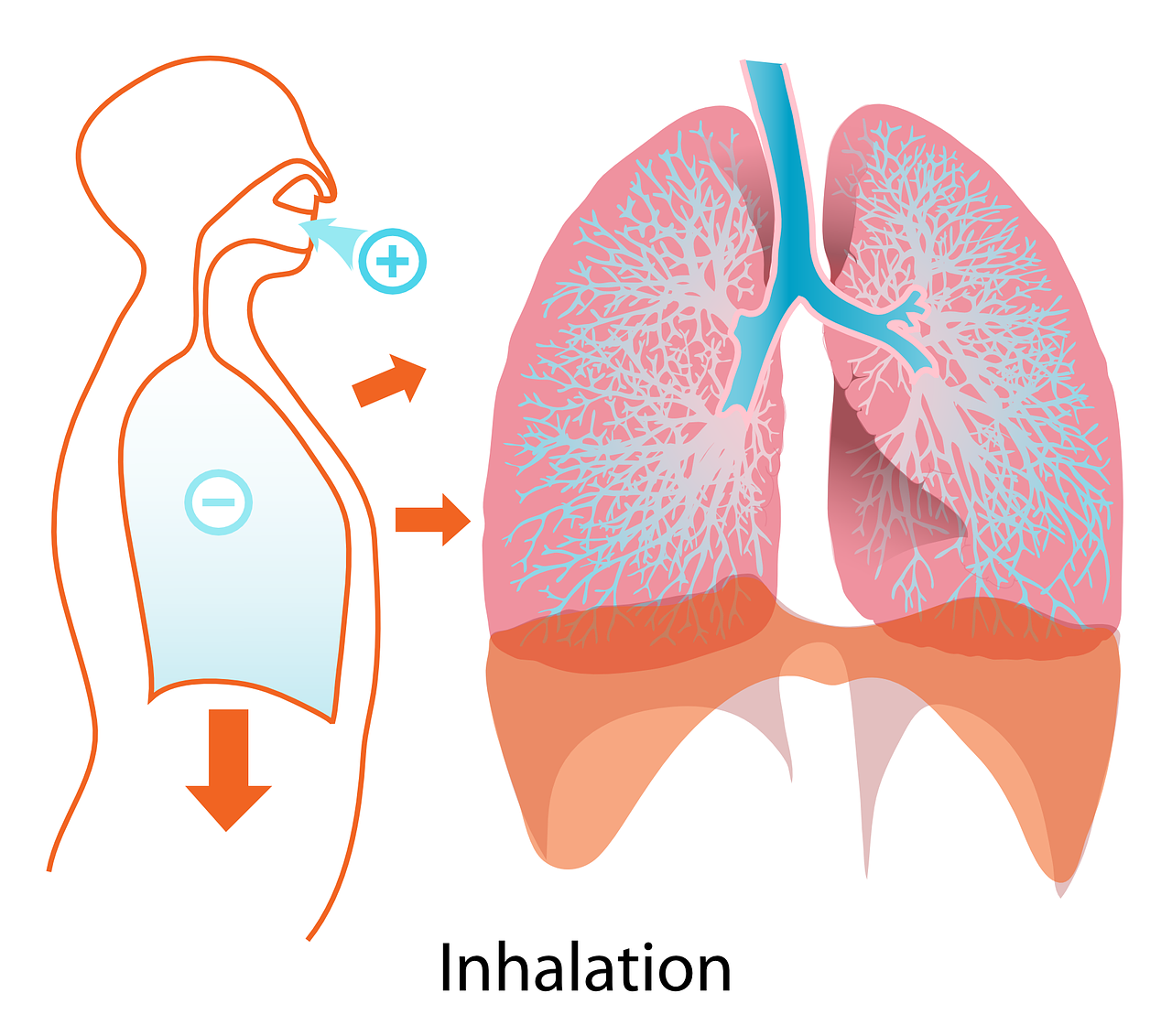Inhalers have revolutionized the treatment of respiratory conditions, providing effective relief for individuals suffering from asthma, chronic obstructive pulmonary disease (COPD), and other respiratory ailments. These devices deliver medication directly to the lungs, targeting the source of the problem and minimizing systemic side effects. One of the key components found in inhalers is steroids. Steroids, commonly known as corticosteroids, play a crucial role in managing respiratory conditions by reducing inflammation in the airways and improving respiratory function. In this article, we will explore the role of steroids in inhalers and their positive impact on respiratory health.
Understanding Steroids
To comprehend the role of steroids in inhalers, it is important to have a basic understanding of what steroids are and how they function. Steroids are synthetic drugs that mimic the effects of naturally occurring hormones in the body. In the case of corticosteroids, they imitate the functions of cortisol, a hormone produced by the adrenal glands. Corticosteroids have potent anti-inflammatory properties and are widely used in the treatment of various conditions, including respiratory disorders.
The Mechanism of Action
When inhaled through an inhaler, steroids act directly on the airways, reducing inflammation and preventing the exacerbation of respiratory symptoms. By inhibiting the production of inflammatory substances and suppressing the immune response, steroids help to open up constricted airways, making it easier for individuals to breathe. This mechanism of action is particularly beneficial in conditions like asthma, where inflammation and airway constriction are the primary causes of symptoms.
Types of Inhalers Containing Steroids
Inhalers come in different types, and the inclusion of steroids varies depending on the specific needs of the individual and the severity of their condition. Two commonly used inhaler types that incorporate steroids are:
- Metered-Dose Inhalers (MDIs): MDIs are the most traditional form of inhalers and consist of a canister containing a specific dose of medication. They release a fine mist of medication when activated by the user, allowing them to inhale the dose effectively. Many MDIs used in the treatment of respiratory conditions contain steroids to manage inflammation.
- Dry Powder Inhalers (DPIs): DPIs are inhalers that deliver medication in the form of a dry powder. These inhalers are breath-activated, meaning that the user needs to take a deep breath to trigger the release of the medication. Like MDIs, certain DPIs contain steroids for their anti-inflammatory properties.
The Positive Impact on Respiratory Health
Steroids in inhalers have been proven to have a significant positive impact on respiratory health. By reducing inflammation in the airways, they not only alleviate symptoms but also help prevent future flare-ups and exacerbations. Regular use of inhalers containing steroids has been associated with improved lung function, increased exercise tolerance, and a reduction in hospitalizations and emergency room visits for respiratory issues.
The Role of Steroids in Long-Term Management
Steroids in inhalers are particularly valuable in the long-term management of chronic respiratory conditions. Asthma and COPD, for instance, require ongoing treatment and maintenance to keep symptoms under control. Inhalers containing steroids are prescribed as a maintenance therapy to prevent symptoms from occurring in the first place. By using these inhalers regularly, individuals can enjoy a better quality of life and minimize the impact of their respiratory condition on their daily activities.
The Role of Steroids in Inhalers
In the United Kingdom, inhalers containing steroids have played a crucial role in improving respiratory health and enhancing the well-being of individuals with respiratory conditions. The National Health Service (NHS) in the UK has implemented comprehensive guidelines and protocols for the management of asthma and COPD, which emphasize the use of inhalers, including those with steroids, as a cornerstone of treatment. The accessibility and affordability of inhalers in the UK have made them widely available to those in need, ensuring that individuals can effectively manage their respiratory conditions and lead fulfilling lives.
Conclusion
Inhalers containing steroids have revolutionized the treatment of respiratory conditions, providing effective relief and improving respiratory function for individuals suffering from asthma, COPD, and other respiratory ailments. By reducing inflammation in the airways, steroids play a crucial role in managing symptoms and preventing exacerbations. As an integral part of long-term management, inhalers with steroids empower individuals to take control of their respiratory health and enjoy an improved quality of life. With ongoing advancements and research, the positive impact of steroids in inhalers is likely to continue, further enhancing respiratory care and overall well-being.
FAQs
Q: What are steroids in inhalers, and how do they work?
A: Steroids in inhalers, also known as corticosteroids, are synthetic drugs that mimic the functions of naturally occurring hormones in the body. When inhaled through an inhaler, steroids act directly on the airways, reducing inflammation and preventing the exacerbation of respiratory symptoms. They inhibit the production of inflammatory substances and suppress the immune response, ultimately opening up constricted airways and making it easier to breathe.
Q: What types of inhalers contain steroids?
A: Two common types of inhalers that incorporate steroids are metered-dose inhalers (MDIs) and dry powder inhalers (DPIs). MDIs consist of a canister containing a specific dose of medication, releasing a fine mist of medication when activated by the user. Many MDIs used in the treatment of respiratory conditions contain steroids for their anti-inflammatory properties. On the other hand, DPIs deliver medication in the form of a dry powder and are breath-activated. Some DPIs also contain steroids.
Q: How do steroids in inhalers positively impact respiratory health?
A: Steroids in inhalers have a significant positive impact on respiratory health. By reducing inflammation in the airways, they alleviate symptoms and help prevent future flare-ups and exacerbations. Regular use of inhalers containing steroids has been associated with improved lung function, increased exercise tolerance, and a reduction in hospitalizations and emergency room visits for respiratory issues.
Q: What is the role of steroids in the long-term management of respiratory conditions?
A: Steroids in inhalers play a crucial role in the long-term management of chronic respiratory conditions such as asthma and COPD. These inhalers are prescribed as a maintenance therapy to prevent symptoms from occurring in the first place. By using inhalers containing steroids regularly, individuals can enjoy a better quality of life, minimize the impact of their respiratory condition on their daily activities, and effectively control their symptoms.
Q: How have inhalers with steroids positively impacted respiratory health in the UK?
A: In the United Kingdom, inhalers containing steroids have played a crucial role in improving respiratory health and enhancing the well-being of individuals with respiratory conditions. The National Health Service (NHS) in the UK has implemented comprehensive guidelines and protocols for the management of asthma and COPD, emphasizing the use of inhalers, including those with steroids, as a cornerstone of treatment. The accessibility and affordability of inhalers in the UK have made them widely available, ensuring that individuals can effectively manage their respiratory conditions and lead fulfilling lives.
Author

Dr. Aditya K. Sharma
I am Dr. Aditya Sharma, a dedicated urologist specializing in kidney transplants and advanced urological surgeries. My career is driven by a passion for delivering exceptional care and pioneering surgical techniques. Outside the operating room, I have a keen interest in studying the effects of anabolic steroids on bodybuilding, seeking to understand the fine line between enhancing performance and maintaining health.







